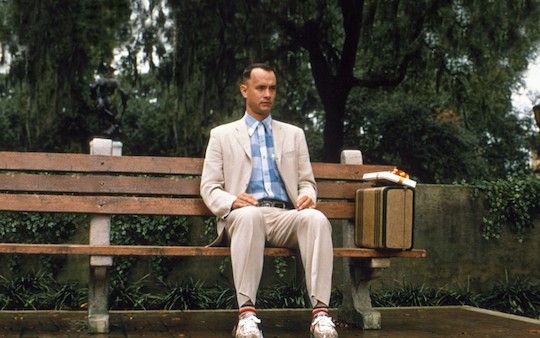
In his 1905 paper “On the Electrodynamics of Moving Bodies”, Albert Einstein posited the theory of special relativity, which sought to explain the relationship between space and time. Three years later, one of Einstein’s teachers, the mathematician Hermann Minkowski, put forward the notion that space and time were in fact two aspects of a unified whole, and thus the concept of spacetime was born. Minkowski suggested that, as spacetime is not flat, but instead warped by the existence of matter and energy, time could appear to move slower near massive objects such as the centre of the Earth. This explains why astronauts on the International Space Station age at a marginally slower rate than people on the surface of our planet. And yet, both for the 214 men and women who’ve set foot upon the ISS since its launch in 1998, and the 7 billion human beings on Earth, it has been twenty years since the theatrical release of Forrest Gump.
The high-precision time standard International Atomic Time is calculated from a weighted average of the time kept by over 200 atomic clocks in over 50 national laboratories worldwide. It differs from Coordinated Universal Time (UTC), which is used for civil timekeeping all over the Earth’s surface, by 35 seconds. This is due to the addition of leap seconds, which prevent UTC from drifting away from atomic time because of irregularities in the Earth’s rate of rotation. Leap seconds are irregularly spaced and unpredictable, having occurred only 25 times since this system of correction was implemented in 1972. The most recent leap second happened on June 30th 2012 at the entirely unorthodox time of 23:59:60 UTC. Of course, whether you take into account the 7 leap seconds added to UTC since 1994 or not, twenty years have indeed elapsed since audiences the world over were first introduced to Tom Hanks’s endearingly slow-witted Alabama everyman.
Philosophers continue to disagree on the nature of time, with some arguing that it constitutes a key component of the fundamental structure of the universe — a framework through which events and objects must pass — while others see it as an intellectual construct, created by humans to aid in the processing of their environment. What’s beyond any doubt is that temporal matters are at the very heart of human existence, playing a key role in societies, industries and religions of all kinds. Since the dawn of mankind, efforts have been made to record time, and today we can do so with previously unimaginable precision. Our modern calendars, clocks and operational definitions of time — which use observable events such as the passage of a free-swinging pendulum to measure time with an incredibly high degree of accuracy — mean our lives are now unavoidably defined by the days, weeks, months and years over which they unfold. And whichever way you look it, twenty such years have passed since we first opened our hearts to Robert Zemeckis’s Oscar-winning tale of life, death and the little moments that touch us in between.